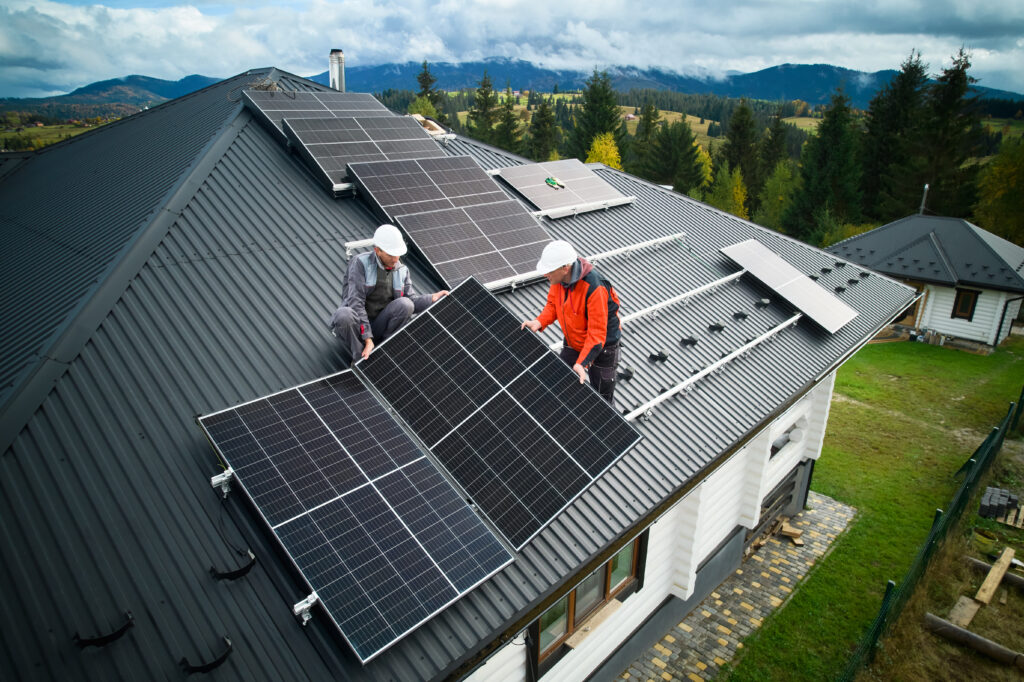Australian and New Zealand solar energy is a rapidly expanding industry. with environmentally conscious consumers looking to lower their carbon footprint and save money on long-term energy costs.
The past 12 months have been a year of opportunities and challenges for solar companies, meeting these customer demands while also dealing with many other new policy developments as well as competition.
This article breaks down how small business owners working with solar can find their audience, take advantage of government funding, and develop a brand that suits this shifting landscape.
Understanding your audience: The eco-conscious, cost-saving consumer
Knowing your target audience’s goals is one of the first steps to successful marketing. Solar buyers today are usually more focused on reducing their environmental footprint and saving money on energy. Directly addressing these worries will help you capture your audience and build relations.
Appeal to environmental values
In your marketing messages, make solar energy sound like a smart ecological choice. Many customers would like to be more environmentally friendly and support sustainable practices. Explain how your solutions help reduce greenhouse gas emissions and follow green values.
Focus on savings
With inflation hitting power prices, buying habits are changing, and customers are demanding a better value energy solution. Appeal to your customers’ desire to save money by pointing out how solar can reduce their power bills by minimising reliance on the grid.
Practical tip: Survey your customers to find out what motivates them the most. With this information, you can tailor your marketing materials and advertisements around savings, energy independence, or environmental impact as internal benefits.

Digital marketing tactics for the solar industry
A solid digital marketing strategy is necessary for solar companies to reach their high-intent customers. Here is how you can use search engine optimisation (SEO), content marketing, and paid advertising to bring in the right kind of people.
Local SEO
Target keywords around your location for local SEO, e.g. solar panel installation [city name]. This will enable you to reach users who are actually looking for solar solutions in your area. Also, make sure to maintain proper details in your Google My Business profile, like contact number, location of services, and reviews.
Content marketing
Establish your brand as the authority by creating a blog or resource section related to the topics your target audience is interested in, so it could be things like How Solar Technology Works or Best Solar Maintenance Tips. They can bring in visitors and inform prospective clients.
Online advertising
With Google ads and social media ads, you can attract people who are already researching solar customers. Employ advertorials focused on what matters to the customer most—energy savings, government rebates, and ease of installation.
Google Analytics
Utilise the standard Google Analytics tool, which makes it easy to look at pages where your traffic and conversions are happening. Concentrate your content efforts on engaging topics—this will help you iterate on and improve your strategy.
Building community trust through transparency
Building trust with potential customers starts with transparency. Solar companies can earn credibility by communicating clearly, sharing genuine stories and fostering honest, open interactions with their customers.
Tell your brand story
Share the story behind your business and why sustainability is important to your team. Stories of how your projects impact communities help humanise your brand and create deeper connections with customers.
Customer testimonials and case studies
Include testimonials and case studies to show your successful installs, along with the good news from satisfied customers. Video testimonials are especially powerful since this is a visual proof of the advantages of going solar.
Make it easy for satisfied customers to share their experiences on platforms like Google My Business or your social media channels. Sharing these stories prominently can reinforce your reputation and appeal to prospective clients.
Leveraging government incentives in your marketing
Government incentives are a significant draw for cost-conscious customers, helping to offset initial installation costs. Informing your audience about these incentives can help make solar more tangible.
Explain rebates and tax credits
Let’s be honest: not all consumers will understand the savings—rebates or tax credits, for example—they might be eligible for. Create content explaining these incentives in straightforward terms and how your company can help them access these savings.
Promote financing options
Since upfront costs can be a concern, outline any financing plans you offer, such as zero-down-payment options. This flexibility can increase the affordability of solar to more people.
On your website, consider installing a “Savings Calculator” so customers can see how much they will save and any government incentives they may qualify for. An interactive tool can spark interest and contribute to engagement, which in turn converts your website visitors into warm leads.

Embracing trends and innovations
Solar companies must stay on top of rapidly emerging trends and where the technology goes next. Update with New Technologies By integrating new technologies, you improve your customer experience and emerge as an innovator in the industry.
Virtual solar consultations
With virtual consultations, customers can learn about solar at their own pace and time without the need for an in-person consultation. This can be a differentiator for customers who are busy or in rough geography.
Smart home integration
With smart home tech gaining increasing traction, you might as well integrate your solar solutions into the system. This means customers can have real-time visibility into and manage energy consumption, ultimately enabling more independent and controllable energy use.
Email marketing for customer retention and engagement
Email marketing is still an excellent channel to keep in touch with potential and existing customers. Targeted email campaigns help you to remain top of mind with customers, help nurture leads through the funnel, and support repeat business.
Educational newsletters
Send out monthly e-newsletters that present value, such as maintenance reminders, industry news, and incentive updates. Sharing useful material can help establish your brand as a go-to.
Personalised follow-ups
Follow up with potential customers after initial consultations or inquiries to address any remaining questions. Personalising these interactions can help you build trust and increase conversion rates.
Segment your audience
Divide your email list into segments based on your customer type, and tailor the content accordingly. That way, every subscriber gets relevant information depending on whether they are leads, new customers, or long-term clients.
Data-driven decisions for continuous improvement
Tracking and analysing marketing performance helps you understand what works best for your audience, which you can adjust over time to bring maximum results.
Monitor key metrics
Monitor metrics such as website traffic, conversion rates, email open rates, and social media engagement regularly. With this data, you can determine where your best successes lie and what work could use.
A/B testing
Split-test ads, emails, or web pages against each other. Testing allows you to constantly refine your approach based on actual audience tastes.
Consistently monitor your results
Use your analytics once a month to determine what is working and what needs re-adjustment. Using data-derived methodology, you will always target your marketing towards the customer.
Connect with your audience
As the solar sector is becoming highly competitive and dynamic, solar companies need to consider a more comprehensive approach to working on digital marketing platforms and global lead generation in conjunction with trust building as a prescription for successful operation. Using market segmentation and maximising sales funnels, solar businesses can connect with potential customers and assist them in going solar.







